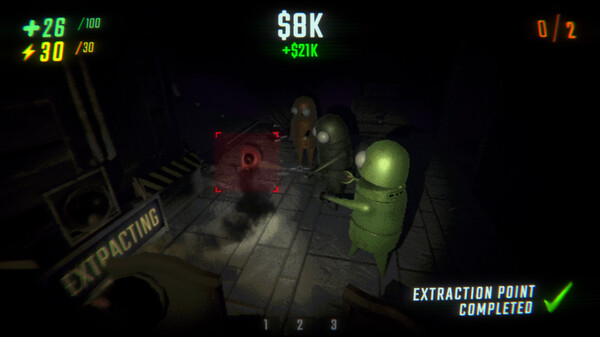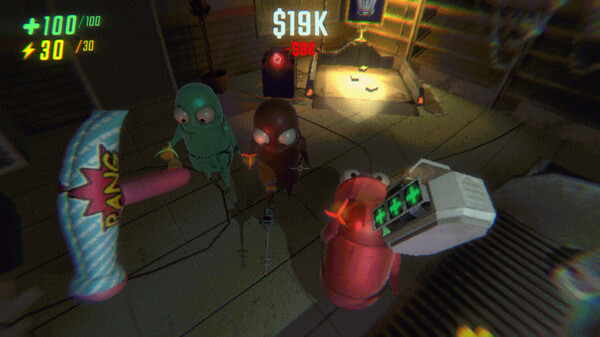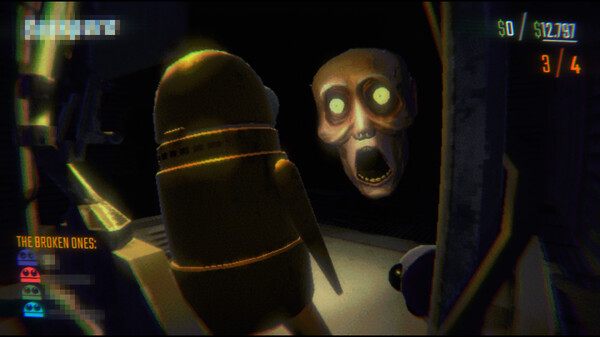Popular Now
Introduction
The survival horror game R.E.P.O has taken the gaming world by storm with its immersive gameplay, cooperative mechanics, and unsettling atmosphere. However, one of its most debated features is the AI-driven enemy behavior. Unlike traditional horror games where enemies follow scripted paths, the AI in R.E.P.O learns from player actions, making each session unique and terrifying.
But is this AI system a groundbreaking innovation, or does it create an unfair challenge that frustrates players? In this article, we will take an in-depth look at how AI behavior in R.E.P.O affects gameplay, its strengths, weaknesses, and the impact it has on both casual and hardcore players.
The Core AI System in R.E.P.O
How the AI Learns from Players
Unlike typical horror game enemies that roam in preset patterns, R.E.P.O's AI continuously adapts to player strategies. If you repeatedly hide in the same spot or use a particular escape route, the AI will learn and anticipate your movements.
The Role of Sound and Movement
Enemies in R.E.P.O are highly sensitive to sound and movement. Every footstep, door creak, and item drop contributes to how the AI tracks players. This sound-based tracking system forces players to be extremely cautious, adding to the tension.
The AI's Ability to Block and Trap Players
The AI can strategically block exits, set up traps, or even bait players into thinking a path is safe when it’s not. This level of unpredictability makes every mission feel different, but also raises concerns about fairness.
Is the AI Too Smart? The Unfair Challenge Debate
Predicting Player Movements
Some players argue that the AI becomes too difficult over time, learning strategies to a point where it feels impossible to escape. Unlike human opponents who make mistakes, the AI rarely makes errors, making it feel unfair.
Adapting Too Quickly
Many horror games give players time to experiment with tactics, but in R.E.P.O, the AI adjusts rapidly, leaving little room for trial and error. Some feel this forces an overly punishing playstyle rather than allowing for creative problem-solving.
No Easy Way to Reset AI Memory
There is no clear mechanic for resetting the AI’s learning process mid-game. This means that once the AI "understands" your strategy, it remains an ongoing challenge for the entire session.
How AI-Driven Fear Enhances the Horror Experience
True Psychological Horror
Traditional horror games rely on jump scares and predictable monster encounters, but R.E.P.O creates fear through uncertainty. Since players never know how the AI will react, the horror feels organic and immersive.
Encourages Dynamic Team Play
In multiplayer mode, the AI forces teams to constantly adapt, keeping communication high and gameplay intense. Unlike games where you can memorize patterns, R.E.P.O ensures that every session is fresh and terrifying.
AI Exploits: Can Players Outsmart the System?
Glitches and Exploits Found by Players
Despite its complexity, players have discovered ways to trick the AI. Some use environmental objects to create safe zones, while others manipulate AI tracking by making noise in one area before running elsewhere.
Developers' Response to AI Exploits
The game developers frequently patch AI weaknesses to maintain difficulty. This means strategies that worked before may no longer work in future updates, keeping players on their toes.
Difficulty Scaling: AI vs. Player Skill
How the AI Adjusts to Different Skill Levels
The AI doesn’t have fixed difficulty settings. Instead, it adjusts dynamically based on player performance. This means the game gradually increases in challenge as players become more skilled.
Does the AI Make the Game Unfair for New Players?
Some newcomers feel overwhelmed too quickly, as the AI doesn't differentiate between beginners and experienced players. While skilled gamers enjoy the challenge, casual players may find the learning curve too steep.
Comparing R.E.P.O’s AI to Other Horror Games
How It Differs from Traditional Horror AI
Most horror games feature enemies that follow pre-determined patrol paths (Resident Evil, Outlast), making them predictable. R.E.P.O, in contrast, features AI that changes behavior dynamically.
Does R.E.P.O Set a New Standard for AI in Horror?
The success of R.E.P.O could inspire future horror games to incorporate learning AI, leading to a new wave of more dynamic horror experiences. However, balance will be key to avoid AI becoming too frustrating.
Should the Developers Make AI Adjustments?
Potential AI Tweaks to Improve Gameplay
Some suggested improvements include:
- Difficulty Settings – Allow players to choose how aggressive the AI behaves.
- AI Reset Option – Provide a way to clear AI memory mid-game.
- More Audio Cues – Give players better feedback on how much noise they are making.
Balancing Horror and Fairness
While AI-driven horror is a major selling point, developers must ensure that it remains fair and engaging, rather than purely frustrating.
The Future of AI in R.E.P.O and Beyond
Possible AI Expansions in Future Updates
Developers have hinted at adding:
- New AI enemy types with different behaviors.
- AI personalities, making some enemies more aggressive while others are more strategic.
- Environmental AI interactions, where enemies manipulate surroundings more dynamically.
AI-Driven Horror in Future Games
If R.E.P.O succeeds, future horror games may adopt similar AI mechanics, creating smarter and more terrifying enemies across the industry.
Conclusion
The AI system in R.E.P.O is one of its most defining features, creating a terrifyingly intelligent enemy that learns and adapts. However, while this innovation enhances horror, it also raises concerns about fairness, especially for new players.
If developers balance AI difficulty, R.E.P.O could set a new gold standard for horror game AI. Whether you love the challenge or find it overwhelming, one thing is certain: R.E.P.O delivers one of the most unique and unpredictable horror experiences in gaming today.

















